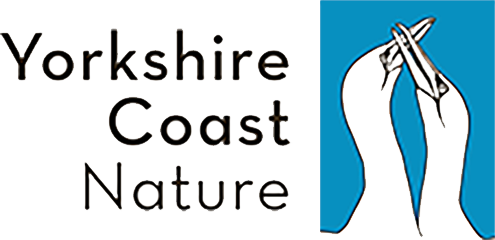We're pleased to have Dr Lucy Mitchell, from Hull University give us an update on all things MOTUS, including some exciting news about potentially getting some of our first tags deployed this spring!

21 January 2021
Over to Lucy;
As we head into a new year, it's time to celebrate some Motus successes from 2020, and to look forward to some exciting things on the horizon for 2021.
Although we weren't able to do as much as we would have liked to develop and grow the network, we are making plans and feeling positive about this year.
The Motus network as is, is already producing some really interesting data on how birds move across the channel to the UK. In spring 2020 a Northern wheatear was detected on the receiver located at Lowestoft, Suffolk. This bird had originally been tagged on Helgoland, Germany (seemingly a popular starting point for so many of the birds we have detected so far over here!), on 27th April, taking 13 days to travel through mainland Germany, along the coast of the Netherlands and into Suffolk.
It was detected for an 8 hour period at Lowestoft so this is a great sign it was a genuine detection.
Later in the year, we had a detection at Sandwich Bay Bird Observatory Trust - our newest receiver! The Observatory wrote a blog post about it themselves. This time a Whitethroat (Sylvia communis), ringed in mainland Germany close to the coast on August 28th, was detected a few days later further south in Germany, and then at Sandwich Bay on September 4th. This means the Whitethroat travelled across northern Europe – a distance of 606 kilometres – in 3 days, 22 hours and 52 minutes, giving an average speed of around 6km/ hour. We know that it probably travelled across the channel – where it would not have been able to land – at a much faster speed, as the European Robin did when it travelled from the Hoek van Holland to Lowestoft at a speed of around 26km/hour (https://univhullornithgroup.wixsite.com/horc/post/our-flying-visitors).
Most recently, we have had a detection of a Starling at the Landguard Bird Observatory receiver - they have also added this to their great Landguard blog (Motus detection). The image below shows the bird's route from the Netherlands across the channel, to Suffolk.
Again, this is quite a popular crossing point, and the Starling makes the crossing in 3 hours and 15 minutes!
These data are fantastic, and as well as helping to answer some questions, they also lead us to asking more! Is this the most popular crossing point? What about further north? And what happens after they land? This year we're hoping to be able to put more receivers up in the UK - not only further up and down the east coast, but inland, as we believe that a lot of these birds landing on our shores in the autumn as the starling, whitethroat and robin have done, will probably move inland.
We are starting by thinking about major estuaries and river valleys, such as the Humber, which are navigational pathways for birds and bats. We also want to twin this with an understanding of breeding and wintering origin, through stable isotope analysis.
In Spring 2021, we hope to deploy our first Motus tags onto European blackcaps. We have recently secured permissions to do this at Spurn, Landguard, Sandwich and Dungeness, where we will hopefully capture blackcaps during their migration period, and obtain departure directions from them, to infer migration direction and therefore, their phenotype. Blackcaps are a really interesting model species, and an example of how rapidly a migratory route can evolve - we now receive wintering individuals from their breeding grounds in central Europe, something that has only started to occur in the last 40-50 years. As we are at the convergence of a few different migration flyways, we are likely receive a number of these individuals, as well as those breeding further north, those breeding in Britain, and those on passage just using the UK as a stop off point. This work is closely linked to the BTO, and we are hoping that this will lead to further studies of this nature as well as an expansion of the network. More information is available on this page of the Research cluster website.
Once again, we really urge anyone with an interest in all aspects of migration to get in touch with us about how to go about hosting a receiver, and about species they are interested in. Motus is all about collaborative working, and information sharing and we want to see as many people using it as possible, but we can only do this by expanding the number of receivers currently available. Please don't hesitate to tweet me (@lucyjayneryan) or email me: lucy.mitchell@hull.ac.uk.


